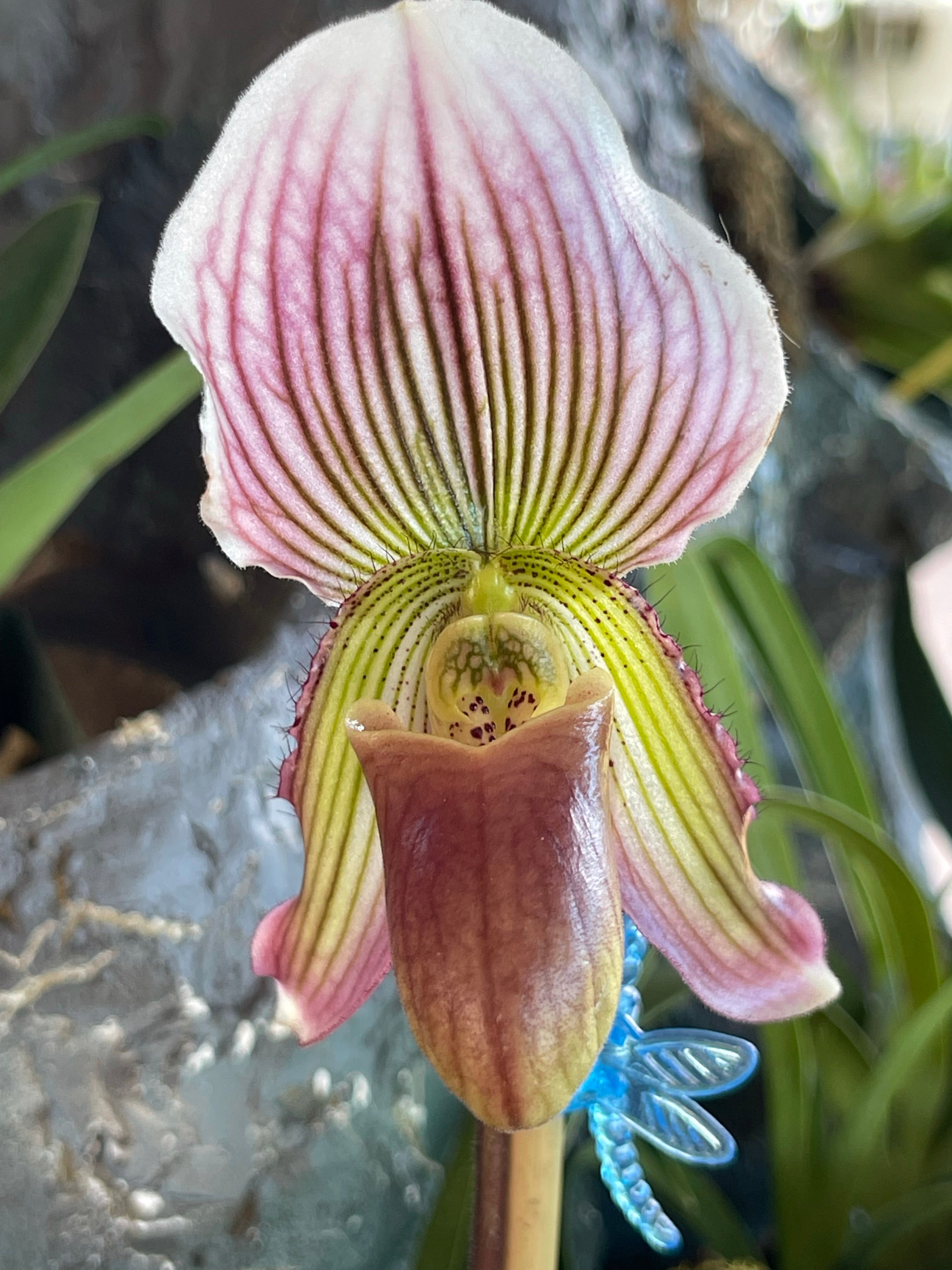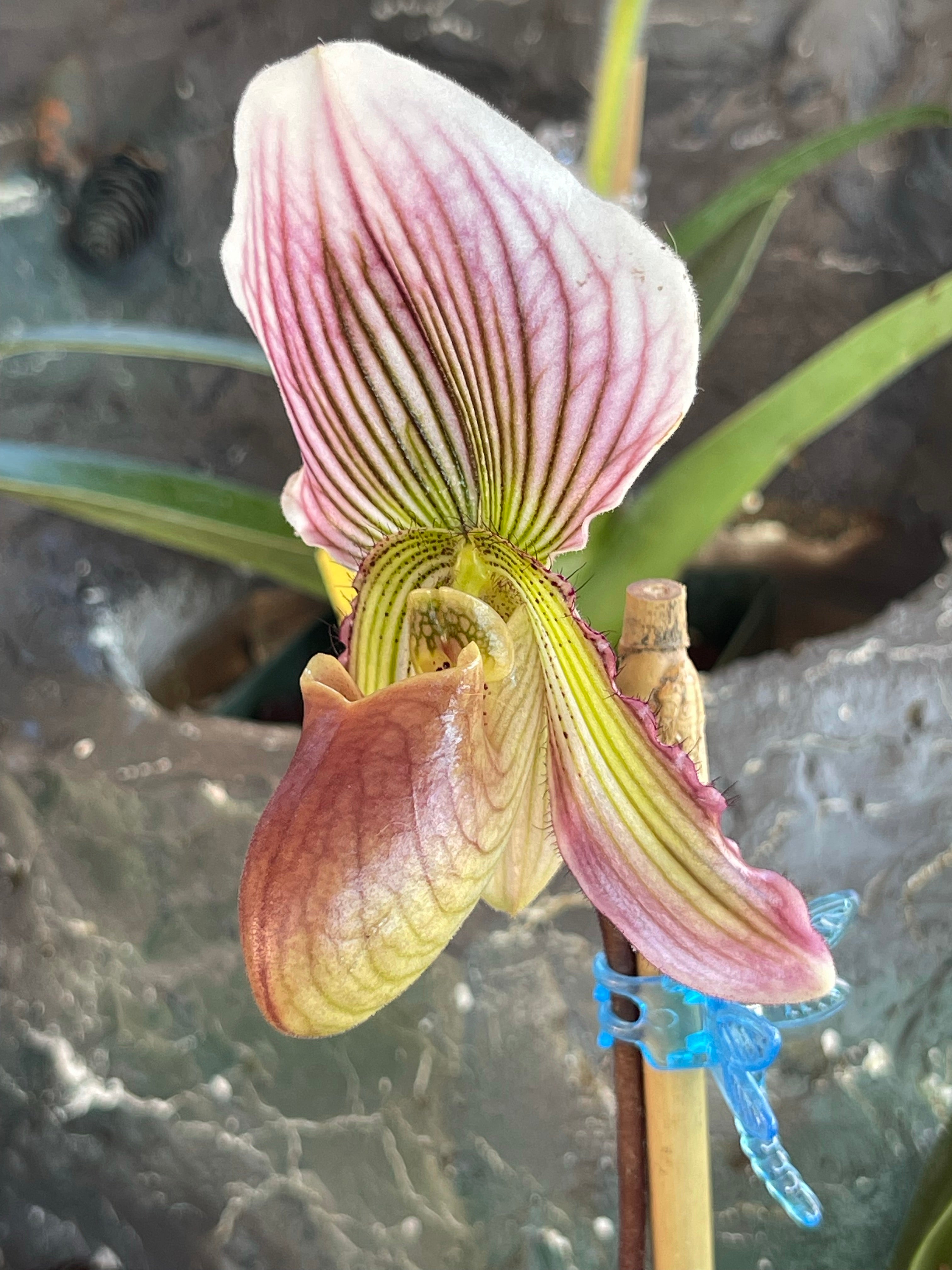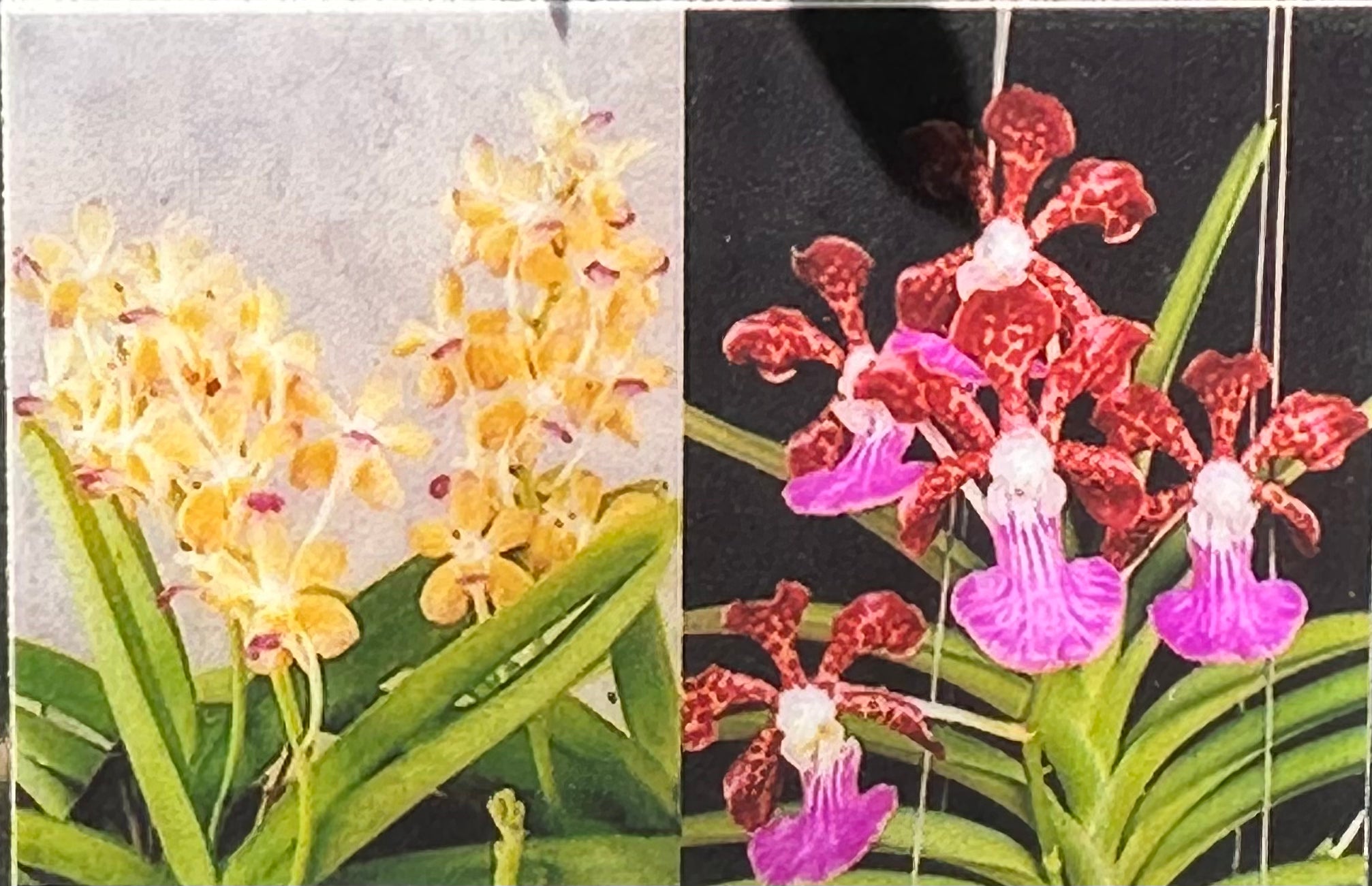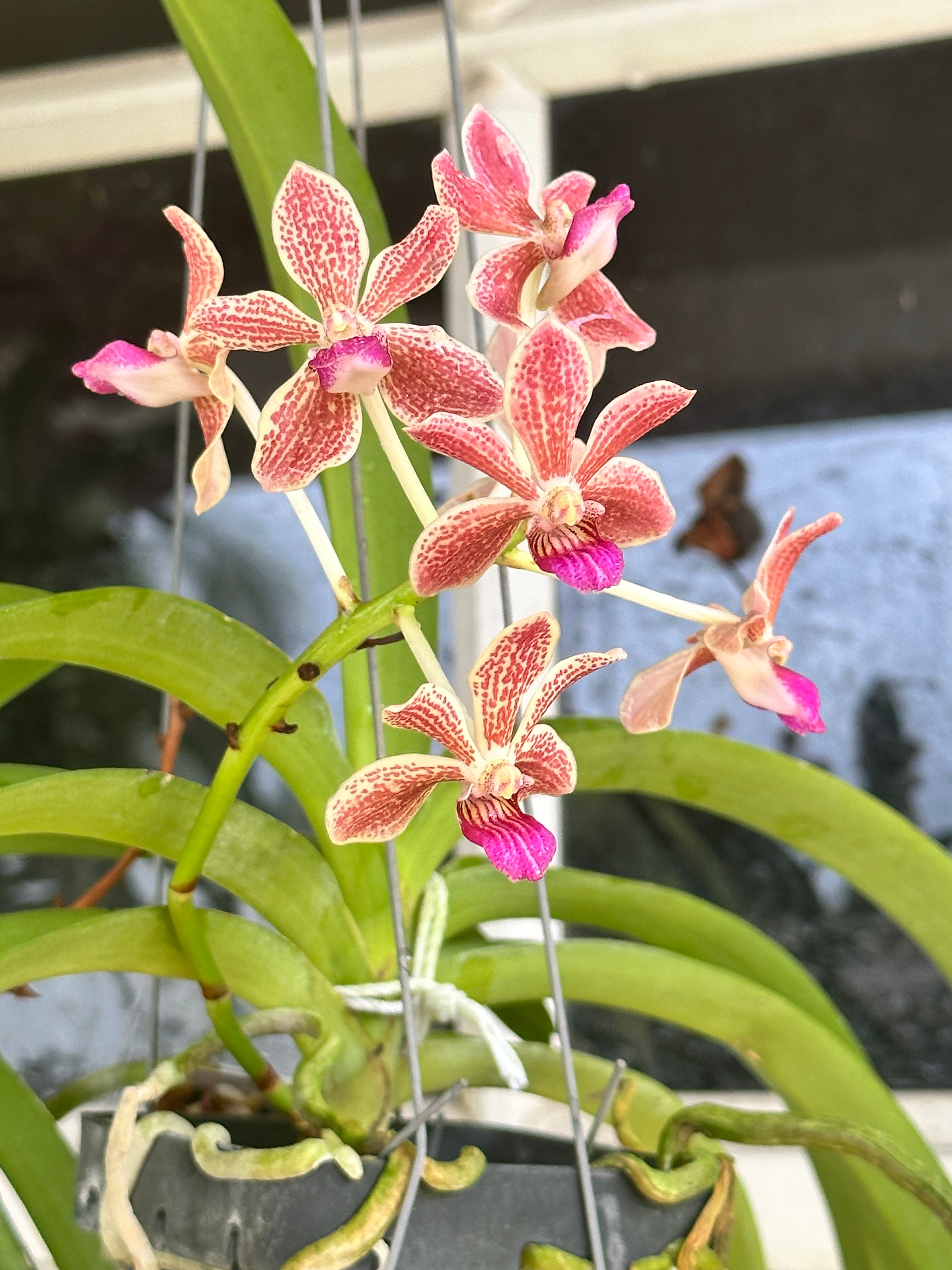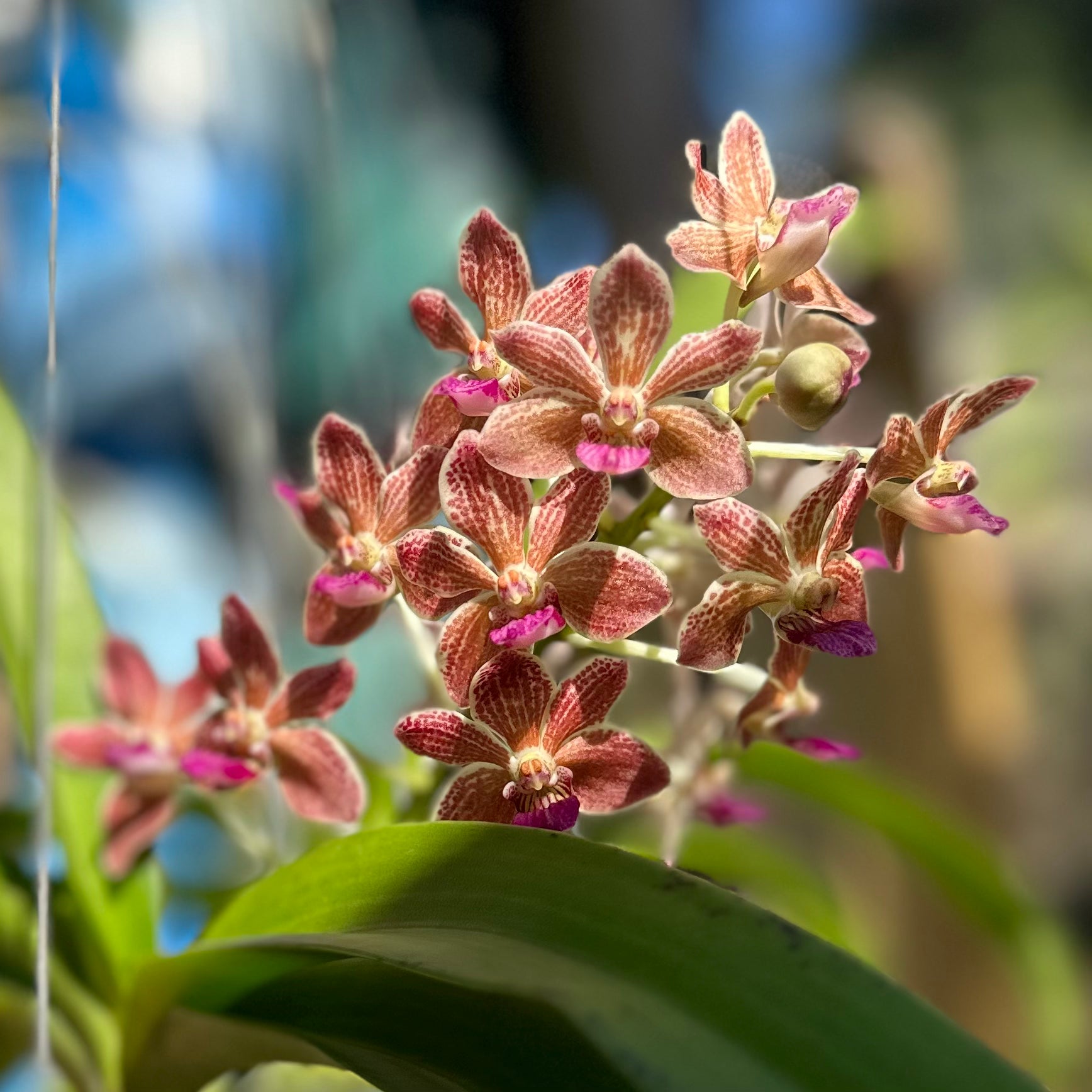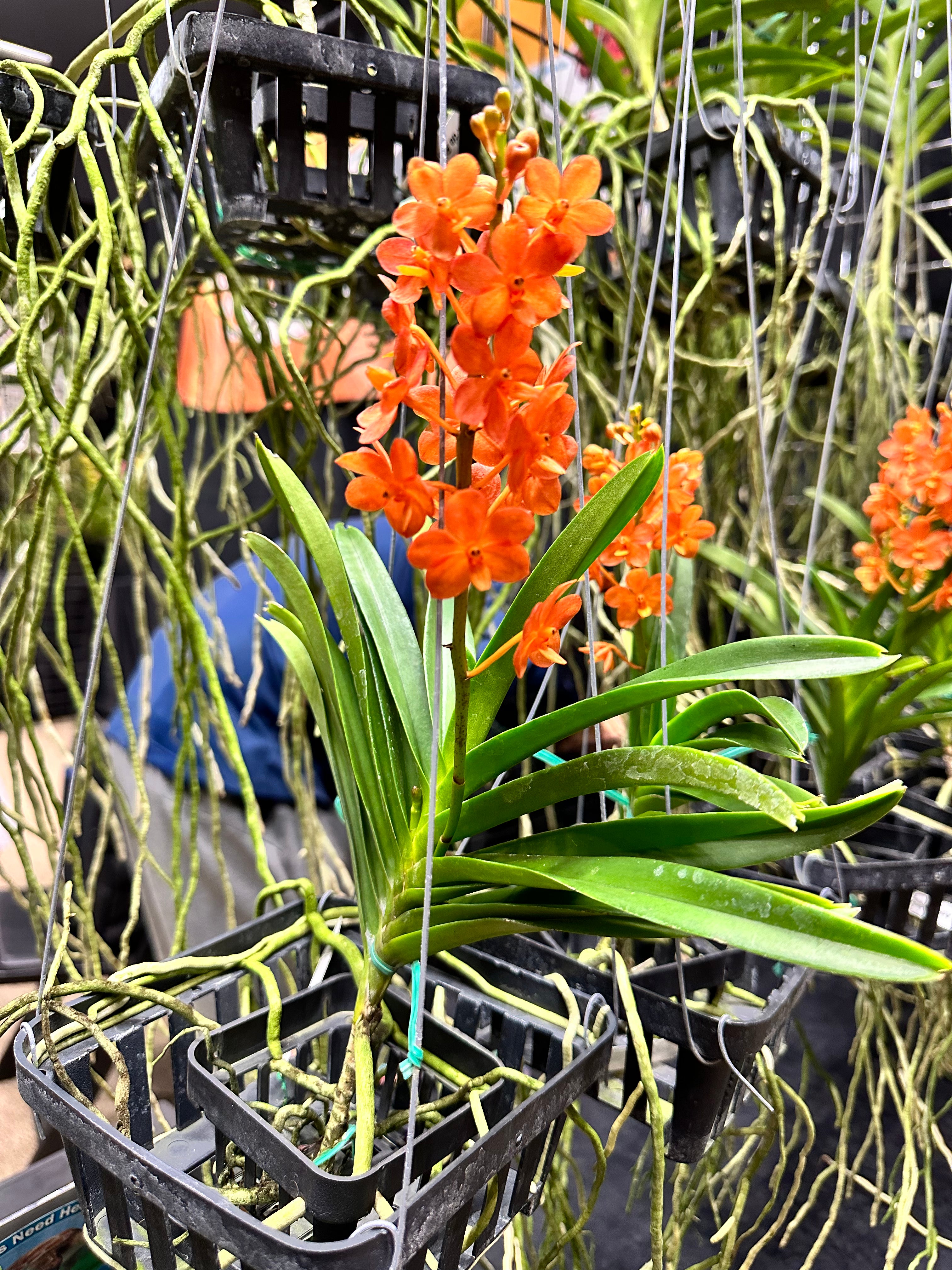
So you bought an Aranda... What now?

What is an Aranda (Mokara)?
By far one of the most common questions, we get when we bring these to a show. They look similar enough to vandas, but the bloom shape and display method tends to throw some orchidists off. Aranda orchids are intergeneric hybrids between Arachnis and Vanda. Mokara included the addition of Ascocentrum, but that was consolidated into the genus Vanda. Thus, Mokara are now referred to as Aranda as well. They are often characterized by rounded star shaped blooms and moderately narrow strap leaves. The leaf attachment at the stem tends to also be at a more upright angle. You may find them often referred to as Vanda top cuttings as the most frequent method of cultivation and distribution is to cut large fans from specimen sized plants. These orchids are often sold bareroot, with no baskets, media or hangers.
Why buy an Aranda orchid?
If you are looking for sun loving, heat tolerant plants these should be your go to! In South Florida, they are often used in landscaping installations as they make excellent flowering displays. They can be adapted to full sun, and are often free flowering throughout the year, some varieties bloom back-to-back and put out flower spikes before the old spike is spent. Arandas are easy to care for once you get them established and will pay back handsomely with quick growth and multiple spikes.
So you bought an Aranda, now what?
Now that we have the basics out of the way, and we roped you into buying some more orchids, what do you do with them? Here is how we care for Arandas, and how to get the most bang for your buck. Aranda orchids do require some work upfront, but once they get established in your area, you won’t want to grow anything else in your front yard.
- As soon as you get your orchids home- water them. Since these are top cuttings, they will not have an oversized root system like an individual Vanda orchid. This is where the extra care comes in. You will want to water as often as possible, but ideally at least one heavy watering per day for the first few weeks.
- Do not put your orchids in full sun immediately. Its best to have them in an area with bright indirect light- ideally a patio or front porch area where they don’t get any direct light hitting their foliage. Allow 4-6 weeks to acclimate and begin growing some new root tips.
- You may lose some bottom leaves, that’s ok. These guys grow FAST! Much faster than normal vanda hybrids.
- Spray your vandas with a good fertilizer, calcium + magnesium supplement, and a root starter. Root starters or hormones prioritize ‘green growth’ on your plants, so this includes your roots and foliage. Since these orchids are sold with varying root systems adding a root starter or hormone to your treatment protocol can get them going faster.
- Our protocol is as follows. Apply this within a couple of days of acquiring your plants and then reapply 2x 10 days apart.
|
Dynagro ‘GROW’ 7-9-5 |
1 tsp/ gallon |
|
Cal- Mag (calcium + magnesium) |
½ tsp / gallon |
|
RapidStart |
1 tsp/ gallon |
- After 3-4 weeks you should see new root tips emerging along the stem and from existing roots. You can begin exposing your Aranda more direct light start with a few days of just morning sun (until about 11am) then increase. Its important to note that if these guys will be in full sun you will want to fertilize appropriately. Plants in direct sun all day/ year-round will need a bit more water and fertilizer to look their best.
This seems like a lot of work…
While ‘a lot’ is subjective, you are correct in summating that your Arandas will need a little more TLC upfront to keep them looking sharp. You can absolutely bring them home and slap them in a tree straight away, no acclimation period needed. They will survive, but they may start to get that ‘palm tree’ look quickly. If you skip the acclimation period, at least ensure that they are getting watered every day by a garden sprinkler or hit with a hose for a few minutes and fertilized every 7-10 days. Make sure to send us photos of your orchids in their new home and let us now if you have any questions. We are here to help. Happy Orchid Growing!


